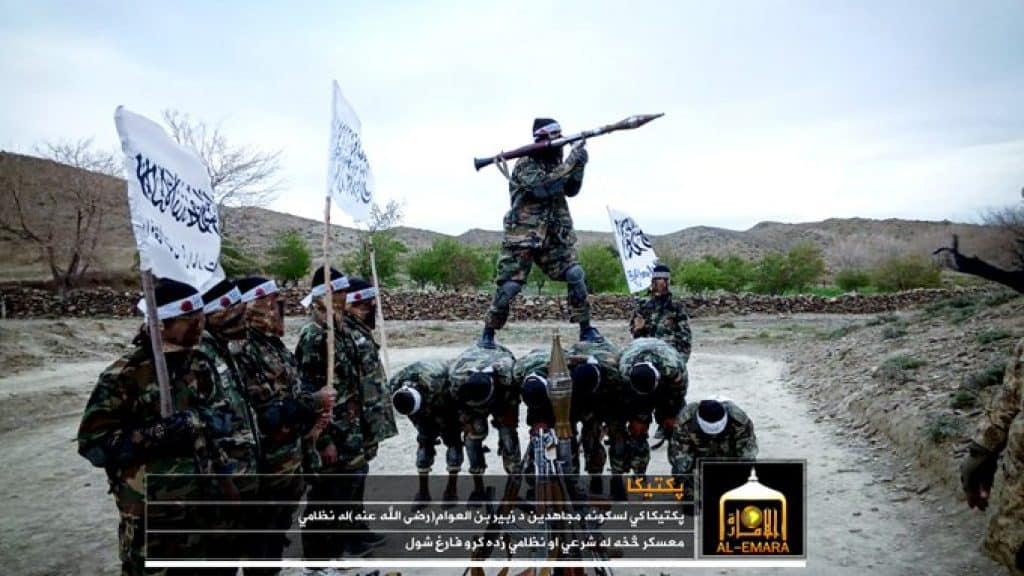
There was a “disturbing increase in violence” in Afghanistan following the signing of a withdrawal agreement between the U.S. and Taliban on Feb. 29, according to a new report by the United Nations Assistance Mission in Afghanistan (UNAMA).
Overall, the number of civilian casualties was 29 per cent lower during the first quarter of 2020, as compared to the same timeframe last year. But this dip in casualties, caused in part by a brief “reduction in violence” before the U.S.-Taliban withdrawal accord was signed in Doha in late February, didn’t hold throughout March. The fighting intensified in the weeks that followed the deal.
UNAMA found that “[m]ore than 500 civilians, including more than 150 children, were killed due to the fighting in Afghanistan during the first quarter of 2020.” This is the lowest figure for the first quarter of any year since 2012.
More than half of the civilian casualties were attributed to “Anti-Government Elements (AGEs),” meaning mainly the Taliban and the Islamic State’s Khorasan province (ISIS-K). UNAMA attributes 55 per cent of the civilian casualties to these actors, with 710 people killed (282) or wounded (428). The lion’s share of these casualties is attributed to the Taliban, with 39 percent, followed by ISIS-K (13 per cent) and the remainder caused by “undetermined AGEs.”
Although the total number of casualties (killed and wounded) in the first quarter was lower than last year, there was an uptick in the number of civilians killed by the jihadists. “The number of civilian deaths attributed to AGEs – particularly the Taliban – increased by 22 per cent in the first quarter of 2020 as compared to the same period in 2019, mainly due to an increase in targeted killings and summary executions,” UNAMA reports.
Actions taken by the Afghan government and its allies accounted “for 32 per cent of all civilian casualties during the first quarter of 2020, causing 412 civilian casualties (198 killed and 214 injured).” Afghan national security forces caused more civilian casualties (21 per cent) than any other Pro-Government Element (PGE), with the U.S. and its NATO allies accounting for far less (8 per cent). UNAMA is especially concerned about the impact of airstrikes and “indirect fire,” as both types of tactics led to a disproportionate number of casualties among children.
UNAMA has been investigating civilian casualties in the Afghan war since 2009. With few exceptions, the Taliban is regularly identified as the actor most responsible for killing and injuring Afghan civilians.
Unsurprisingly, the Taliban quickly denounced UNAMA’s findings.
“We reject the figures published by UNAMA,” Taliban spokesman Zabihullah Mujahid said in a statement earlier today. “The Islamic Emirate employs a special commission for the prevention of civilian casualties which has managed to bring down civilian casualties in Jihadi ranks to near zero.”
The Taliban consistently refers to itself as the “Islamic Emirate of Afghanistan” and is fighting to resurrect this totalitarian regime, which ruled most the country prior to the U.S.-led invasion in Oct. 2001. Mujahid claims that the Islamic Emirate’s “Commission for the Prevention of Civilian Casualties” will deal with any “perpetrators” of violence against civilians and they “will be presented to the courts.” This is a reference to the Taliban’s shadow system of governance, which is present throughout the country.
The U.S., Afghan government, and others have repeatedly called on the Taliban to agree to a ceasefire. But the Taliban has never agreed to a lasting ceasefire. The Taliban rejected one while negotiating with the U.S. State Department, only agreeing to a short-lived “reduction in violence” in February.
As the coronavirus has spread across the globe, Afghan president Ashraf Ghani again urged the Taliban to temporarily lay down its arms. The jihadists rejected his plea.
“This is the umpteenth time that Ashraf Ghani has asked for a ceasefire from the Islamic Emirate but at the same time, he continues to remain an obstacle for the implementation of the agreement through which all sides could have ended the occupation, begun intra-Afghan negotiations and finally attained a ceasefire and dispute resolution,” an Apr. 25 statement attributed to Mujahid reads.
The “agreement” Mujahid mentioned is the Feb. 29 withdrawal accord between the U.S. and the Taliban in Doha. The Afghan government was not a party to the deal, or the negotiations leading up to it. The agreement is lopsided in the Taliban’s favor, with the State Department granting concessions to the Taliban in exchange for the group’s mere participation in eventual intra-Afghan talks. However, the Taliban continues to promote its Islamic Emirate as the only legitimate ruling party in the conflict. This has been a consistent theme in the Taliban’s messaging since 2001, and there is no real evidence that the group is willing to compromise on its longstanding political goals. The Afghan government initially objected to some of the State Department’s concessions, including an uneven prisoner swap, which would see up to 5,000 Taliban fighters and members freed in exchange for 1,000 men held by the group.
As part of the Doha accord, the U.S. also endorsed the Taliban as de facto counterterrorism partner — a notion that is contradicted by more than two decades of evidence.







